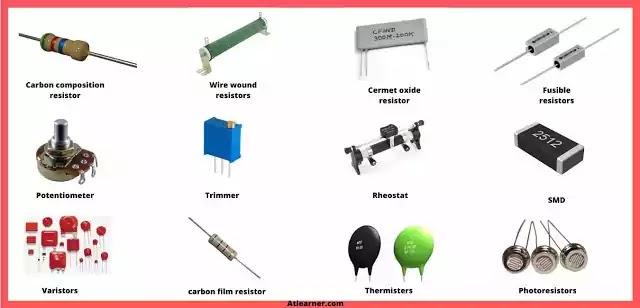
Resistors are amongst the most prominent digital components around because they're easy yet versatile. One of the most usual uses a resistor is to restrict the amount of current in part of a circuit. Nonetheless, resistors can likewise be utilized to control the amount of voltage provided to part of a circuit and to aid produce timing circuits.Limiting present
The circuit in the complying with number reveals a 6-volt battery supplying existing to a light-emitting diode (LED) with a resistor (shown as a zigzag). LEDs (like many various other electronic components) consume current like a kid consumes candy: They attempt to gobble up as much as you provide. But LEDs face an issue-- they melt themselves out if they attract excessive current. The resistor in the circuit offers the useful feature of limiting the quantity of current sent out to the LED (the way an excellent parent limits the intake of sweet).
The resistor limits the amount of existing, I, streaming right into sensitive elements, such as the" size=" 535 ″/ >
Excessive current can destroy lots of delicate electronic elements-- such as transistors and also integrated circuits. By putting a resistor at the input to a sensitive component, you restrict the current that reaches the part. (Yet if you make use of expensive a resistance, you'll limit the present a lot you will not see the light, although it exists!) This easy method can conserve you a great deal of time and money that you would otherwise lose taking care of accidental blow-ups of your circuits.

You can observe how resistors limit current by setting up the circuit shown and trying resistors of different values.
Here's what you utilize to develop the LED-resistor circuit:
( determined by yellow-violet-brown stripes and after that a fourth stripe which may be gold, silver, black, brown, or red).
alligator clips or a solderless breadboard to set up the circuit (see the complying with figure), starting with the 470 resistor. Keep in mind to orient the LED correctly, connecting the shorter lead of the LED to the adverse battery terminal. Do not fret about the positioning of the resistor; in any case is fine. Note how vibrantly the LED beams. After that eliminate the resistor and change it with the resistors various other resistors, one by one, enhancing the quantity of resistance each time. Did you see that the LED radiates less vibrantly each time? That's because greater resistances restrict existing a lot more, and the much less present an LED receives, the much less brightly it beams.
Two ways to establish the resistor-LED circuit.
The following number shows an identical circuit in which each branch includes a various worth of resistance. For higher values of resistance, the current that goes through that branch is restricted extra, so the LED in that branch gives off much less light.
Higher worths of resistance restrict present more, leading to much less light released from the LEDs.
Higher values of resistance limit current a lot more, resulting in less light produced from the LEDs.
Lowering voltage Resistors can be used likewise to lower the voltage supplied to different parts of a circuit. Say, for example, you have a 9-volt power supply yet you require to offer 5 volts to power a certain integrated circuit you're using. You can set up a circuit, such as the one revealed below, to separate the voltage in a way that offers 5 V at the outcome. After that-- voilà-- you can make use of the output voltage, Vout, of this voltage divider as the supply voltage for your incorporated circuit.
Usage 2 resistors to develop a voltage divider panel, an usual technique for producing different voltages.
Use two resistors to develop a voltage divider panel, an usual strategy for producing different voltages for different parts of a circuit.
Next off, use your multimeter set to volts DC to measure the voltage throughout the battery and also across the 15.
as shown. Measurements reveal that the real battery voltage is 9.24 V and also Vout is 5.15 V.
Action the complete voltage provided by the battery (left) and also the voltage across the resistor (right.
Action the total voltage supplied by the battery (left) and the voltage across the resistor (right).
Controlling timing cycles.
You can additionally put a resistor to deal with one more popular element-- a capacitor-- to develop foreseeable up and down voltage swings. You'll locate the resistor-capacitor combination assists you produce a kind of shapely timer, which can be found in helpful for circuits that have time reliances (for example, a three-way traffic light).
